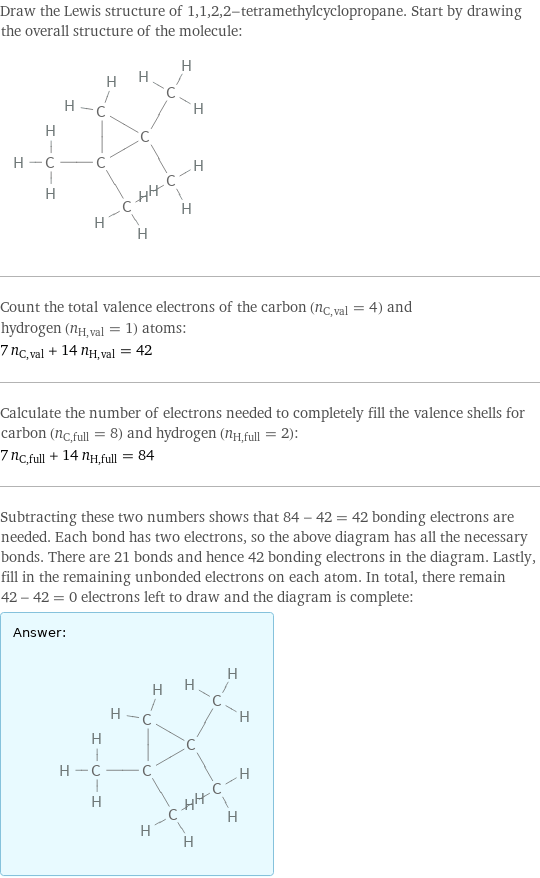Input interpretation

1, 1, 2, 2-tetramethylcyclopropane
Chemical names and formulas

formula | C_7H_14 name | 1, 1, 2, 2-tetramethylcyclopropane alternate names | cyclopropane, 1, 1, 2, 2-tetramethyl- mass fractions | C (carbon) 85.6% | H (hydrogen) 14.4%
Lewis structure

Draw the Lewis structure of 1, 1, 2, 2-tetramethylcyclopropane. Start by drawing the overall structure of the molecule: Count the total valence electrons of the carbon (n_C, val = 4) and hydrogen (n_H, val = 1) atoms: 7 n_C, val + 14 n_H, val = 42 Calculate the number of electrons needed to completely fill the valence shells for carbon (n_C, full = 8) and hydrogen (n_H, full = 2): 7 n_C, full + 14 n_H, full = 84 Subtracting these two numbers shows that 84 - 42 = 42 bonding electrons are needed. Each bond has two electrons, so the above diagram has all the necessary bonds. There are 21 bonds and hence 42 bonding electrons in the diagram. Lastly, fill in the remaining unbonded electrons on each atom. In total, there remain 42 - 42 = 0 electrons left to draw and the diagram is complete: Answer: | |
3D structure

3D structure
Basic properties

molar mass | 98.19 g/mol phase | liquid (at STP) melting point | -80.7 °C boiling point | 75.9 °C density | 0.7185 g/cm^3 solubility in water | insoluble
Units

Liquid properties (at STP)

density | 0.7185 g/cm^3 refractive index | 1.4004
Units

Chemical identifiers

CAS number | 4127-47-3 Beilstein number | 1900257 PubChem CID number | 77778 SMILES identifier | CC1(CC1(C)C)C InChI identifier | InChI=1/C7H14/c1-6(2)5-7(6, 3)4/h5H2, 1-4H3 EU number | 223-937-9